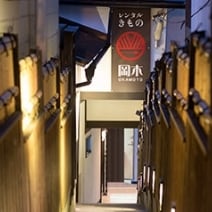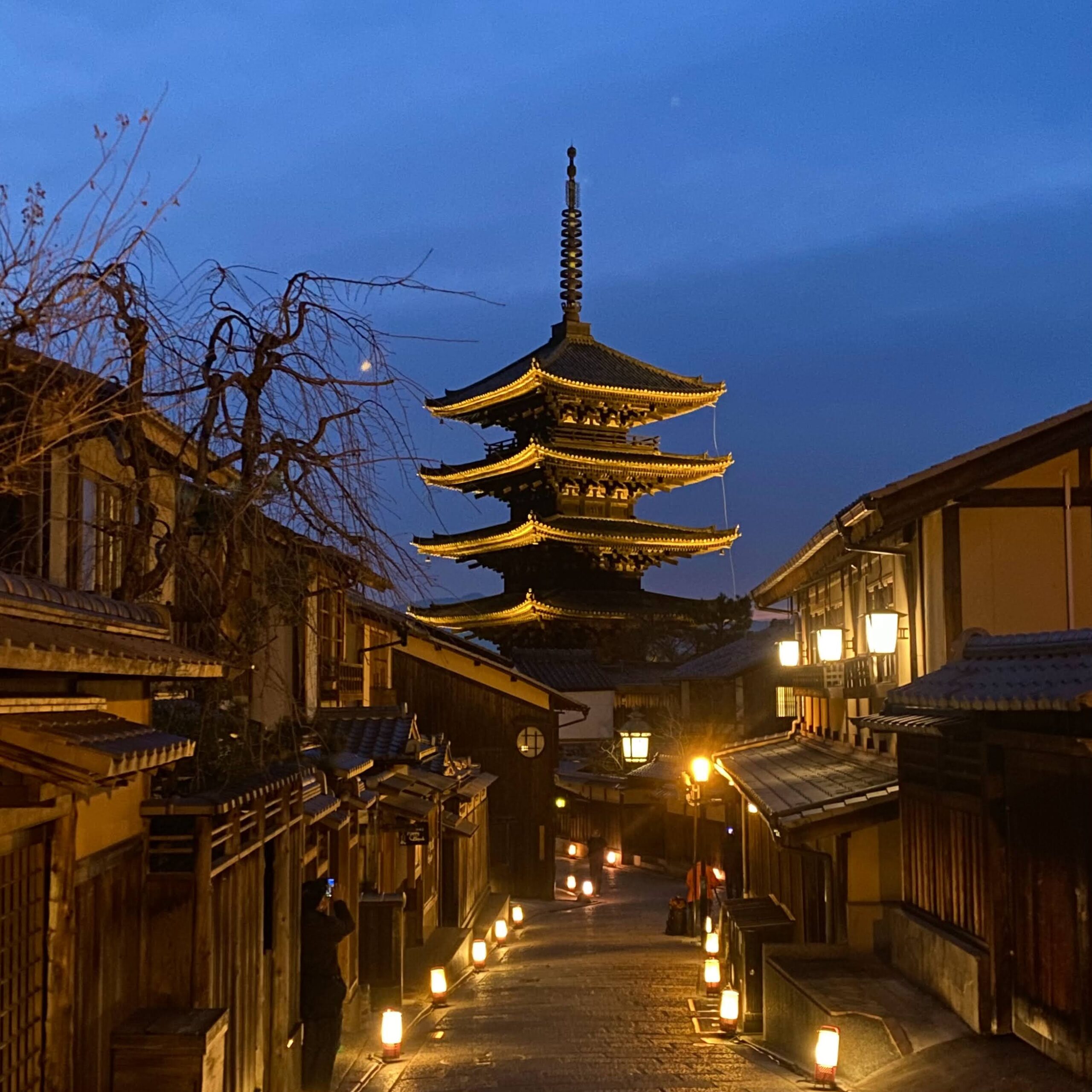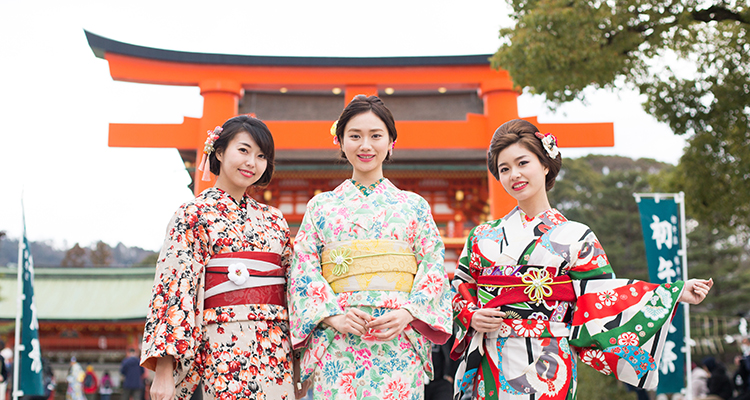
special fearure・column
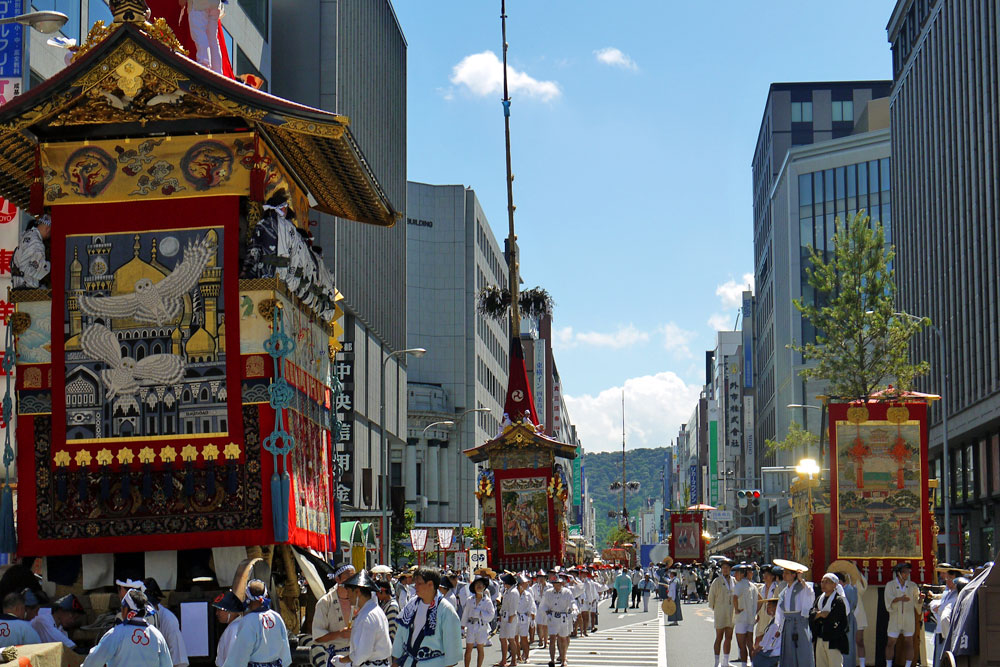
What Is the Gion Festival? A Complete Guide to Its Events and Floats
- What Is the Gion Festival?
- Origin and History of the Gion Festival
- About the Floats (Yamahoko)
- What is a Yamahoko?
- List of Saki Matsuri Floats and Their Blessings (July 17)
- List of Floats in the Gion Festival's Latter Procession and Their Blessings
- Chimaki You Can’t Eat: Their Meaning
- Major Events and Schedule of the Gion Festival
When you think of Kyoto’s summer traditions, several images may come to mind: dining on river decks (kawadoko), the Gozan no Okuribi fire festival, and seasonal pike conger (hamo) cuisine. But above all, the Gion Festival (Gion Matsuri) stands out as the centerpiece. Counted among Japan’s three great festivals—alongside the Kanda Festival in Tokyo and the Tenjin Festival in Osaka—it is widely known not only throughout Kyoto and the Kansai region but across the country.
Once July begins, the sound of traditional festival music—“kon-chiki-chin”—can be heard everywhere in the city, signaling the arrival of summer. With the popularity of rental yukata, colorful summer kimono-clad festivalgoers fill the streets, creating a vibrant and festive atmosphere that transforms Kyoto into a celebration of Gion Matsuri.
In 2022, the Gion Festival returned after a three-year hiatus. For those thinking of strolling through Kyoto in a yukata during the festivities, here is a detailed introduction to the Gion Festival.
What Is the Gion Festival?
Origin and History of the Gion Festival
The Gion Festival is a month-long religious celebration of Yasaka Shrine in Kyoto, held every year from July 1 to 31. It began as the “Gion Goryoe,” a ritual dating back to the Heian period, performed to ward off epidemics caused by the vengeful spirits of those who died unexpected deaths. During the early Heian period, Kyoto suffered frequent outbreaks of disease. In response, people erected 66 halberd-like poles representing the provinces of Japan in the Shinsenen garden (now part of To-ji Temple) to lure and exorcise evil spirits, then paraded three mikoshi (portable shrines) from Gion Shrine (now Yasaka Shrine), offering prayers to the gods.
Originally performed only during times of epidemic, the ritual became an annual event from 970 AD. Over time, it evolved into a public celebration with more festive elements. By the Muromachi period, neighborhood associations began organizing processions with decorative floats—laying the foundation for the modern-day Gion Festival, which has continued for over a millennium.
About the Floats (Yamahoko)
You may have noticed the term “Yamahoko” mentioned repeatedly—so what exactly are they?
What is a Yamahoko?
Yamahoko are elaborate floats pulled through the streets during the festival. Built atop wheeled platforms, they feature artistic structures resembling homes or mountains, topped with spears or halberds. The highlight of the Gion Festival is the Yamahoko Junko (Float Procession), held in two parts: the Saki Matsuri (July 17) and the Ato Matsuri (July 24).
These floats play an essential role in the rituals: during the Saki Matsuri, the floats purify the city before the gods are welcomed in mikoshi for the “Shinko-sai” (Divine Procession). In the Ato Matsuri, the floats once again parade through the streets to cleanse the city and return the gods to Yasaka Shrine in the “Kanko-sai” (Return Procession).
There are 33 floats in total, each enshrining a different deity and offering various blessings. Remarkably, they are constructed without a single nail—assembled entirely with rope by skilled carpenters. The parade order is determined during the Kuji-tori ceremony on July 2, though some floats like the Naginata-hoko (which always leads) are exempt from the draw. Of the 33 floats, 29 are designated Important Tangible Folk Cultural Properties of Japan, and the float procession itself is registered as UNESCO Intangible Cultural Heritage.
The smaller “Yama” floats are carried by around 20 people, standing about 15 meters tall and weighing 1.2–1.6 tons. Each has its own decorative theme. The larger “Hoko” floats are pulled by 40 or more people. The Naginata-hoko—leading the Saki Matsuri—is 25 meters tall and weighs 11 tons. It’s the only float that carries a real boy (chigo) instead of a doll.
Here are the floats of each of these towns.
List of Saki Matsuri Floats and Their Blessings (July 17)
・Naginata-hoko: Protection from misfortune and disease
・Toro-yama: Same
・Ashikari-yama: Marital harmony, matchmaking
・Tokusa-yama: Protection for lost children, reunions
・Kanko-yama: Protection from misfortune and disease
・Kakkyo-yama: Good fortune, financial success
・Ayakasa-hoko: Safe childbirth, matchmaking
・Hakuga-yama: Protection from misfortune and disease
・Kikusui-hoko: Longevity, business prosperity
・Abura-tenjin-yama: Protection from misfortune and disease
・Taishi-yama: Wisdom, academic success, substitution of misfortune
・Hosho-yama: Matchmaking
・Niwatori-hoko: Protection from misfortune and disease
・Hakuratei-yama: Same
・Shijo-kasa-hoko: Blessings, protection from misfortune
・Moso-yama: Filial piety
・Tsuki-hoko: Protection from misfortune and disease
・Yamabushi-yama: Lightning protection, misfortune protection
・Urade-yama: Safe childbirth
・Arare-tenjin-yama: Lightning and fire protection
・Hoka-hoko: Protection from misfortune and disease
・Iwato-yama: Good fortune
・Fune-hoko: Safe childbirth
These floats are assembled from July 10 to 14.
List of Floats in the Gion Festival's Latter Procession and Their Blessings
Latter Procession (Ato-matsuri): Held on July 24
・Hashibenkei-yama: Physical health
・Kita-Kannon-yama: Protection from misfortune and disease
・Koi-yama: Success and promotion
・Hachiman-yama: Marital harmony, children's health, relief from night crying
・Kuromushi-yama: Protection from theft
・Minami-Kannon-yama: Protection from misfortune and disease
・Ennogyoja-yama: Safe childbirth, traffic safety, protection from disease
・Jomyo-yama: Victory and good luck
・Suzuka-yama: Lightning protection, protection from disease
・Ofuna-hoko: Safe childbirth
These floats are assembled from July 18 to 21, and participate in the Latter Procession (Ato-matsuri) held on July 24.
Chimaki You Can’t Eat: Their Meaning
During the Gion Festival, each float sells its own "chimaki" (decorative charm). Although the word “chimaki” usually refers to a type of rice dumpling eaten during the Boys’ Festival (Tango no Sekku), these are not edible, but instead charms for warding off evil and misfortune.
It is customary to display the chimaki at your entrance for a year, then replace it with a new one during the next Gion Festival. Kyoto locals enjoy visiting different floats to find a charm that offers the blessings they seek.
This year, chimaki can also be purchased online, so please consider it!
🔗 https://naginatahoko.jp/
Major Events and Schedule of the Gion Festival
The float processions introduced above are just a small part of the Gion Festival. Various events and rituals are held almost every day throughout July.
Source: Official Gion Festival Website
http://www.gionmatsuri.or.jp/schedule/
Schedule Overview (Selected Events)
July 1–18: Ritual preparations (Kippu-iri) in each float district
July 1 10:00 AM: Naginata-hoko Chigo Sando (ritual visit), Yasaka Shrine
July 1–11: Upstairs Festival Music (Nikai-bayashi) in float towns (for hoko and hikiyama only)
July 2
- 10:00 AM: Lottery Ceremony (Kujitori-shiki), Kyoto City Hall
- 11:30 AM: Shrine Visit by Float Representatives, Yasaka Shrine
July 3 10:00 AM: Shinnen-aratame (inspection of divine mask), Funaboko Town
July 5 Around 3:30 PM: Chigo Dance Performance, Naginata-hoko
July 7 2:00 PM: Chigo Visit, Ayagasaboko
July 10–14: Construction of floats for the Former Procession
July 10 4:30–9:00 PM: Lantern Parade (Omukae Chochin), Ujiko area
- Around 8:00 PM: Mikoshi Purification (Mikoshi-arai), Shijo Bridge
July 12–13: Float Trial Pulling (Hikizome) and Carrying Practice (Kakizome), Former Procession
July 12–16: Evening Festival Music on floats
July 13
- 11:00 AM: Naginata-hoko Chigo Visit
- 2:00 PM: Kuse Komagata Chigo Visit
July 14–16: Yoiyama (Evening Festival) for Former Procession
July 15
- Early morning: Sacred Bamboo (Imitake) setup, Shijo-Fuyacho
- 8:00 PM: Yoimiya-sai (Evening Shrine Festival), Yasaka Shrine
July 16 9:00 AM: Tea Offering Ceremony, Yasaka Shrine
- Evening: Yoimiya Shinnin Dedication Performances
July 17
- 9:00 AM: Former Procession Float Parade
- Route Check (Kujiaratame), Shijo-Sakaimachi
- 4:00 PM: Shinko-sai (Divine Procession), from Yasaka Shrine to Otabisho
July 18–21: Construction of floats for the Latter Procession
July 20–21: Hikizome and Kakizome for Latter Procession floats
July 21–23: Yoiyama for Latter Procession
July 23
- 9:00 AM: Sencha Tea Offering, Yasaka Shrine
- Afternoon: Goma Fire Ritual, Ennogyoja Town
July 24
- 9:30 AM: Latter Procession Float Parade
- Route Check (Kujiaratame), Teramachi-Oike
- 10:00 AM: Hanagasa Parade, Yasaka Shrine to City Hall and back
- Around 4:00 PM: Kanko-sai (Return of the Deity), from Otabisho to Yasaka Shrine
July 25 11:00 AM: Kyogen Performance Offering, Yasaka Shrine
July 28 Around 8:00 PM: Mikoshi Purification (Mikoshi-arai), Shijo Bridge
July 29 4:00 PM: Shinji Sumi Hokokusai (End-of-ritual Report Ceremony), Yasaka Shrine
July 31 10:00 AM: Eki Shrine Nagoshi Festival (Summer Purification), within Yasaka Shrine grounds
Note: Event dates and times are subject to change depending on the year. Please check ahead.
Enjoy the Gion Festival in a Yukata from Rental Kimono Okamoto
The Gion Festival wouldn’t be complete without a stroll through Kyoto in a traditional yukata.
Rental Kimono Okamoto Yasaka Shrine Store, located right next to Yasaka Shrine, is the perfect starting point for enjoying the festival!
When the time comes to enjoy festivals again, we hope you’ll make lasting memories in Kyoto with a beautiful kimono or yukata.
✨Our staff look forward to welcoming you!✨
Article by:
Rental Kimono Okamoto – Gion Store
〒605-0072 523 Washio-cho, Higashiyama-ku, Kyoto
Website: www.okamoto-kimono.com
Instagram: @rentalkimonookamoto
TikTok: @rentalkimono_okamoto
Facebook: Rental Kimono Okamoto
X (formerly Twitter): @okamotokimono
Lit.link: lit.link/rentalkimonookamoto
Arashiyama Shop
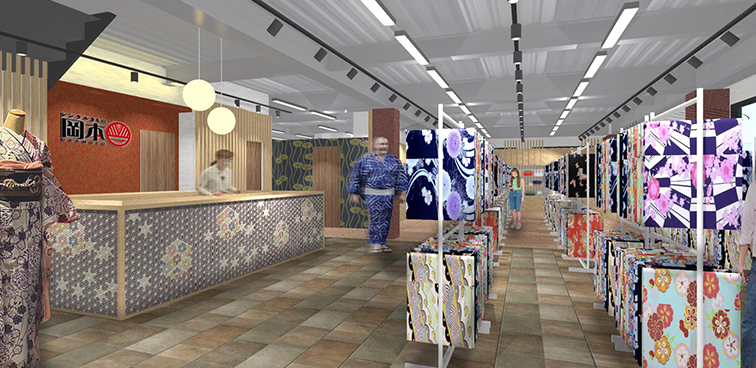
48-4 Saga Tenryuji Kitatsukurimichicho, Ukyo-ku, Kyoto 616-8374, Japan
Phone: +81-75-950-0805 / Fax: +81-75-950-0806 / E-mail: arashiyama@okamoto-kimono.com
Nearest Station: Arashiyama (Randen Line) / JR Saga-Arashiyama Station
Rental Kimono Okamoto - Fushimi Inari shop
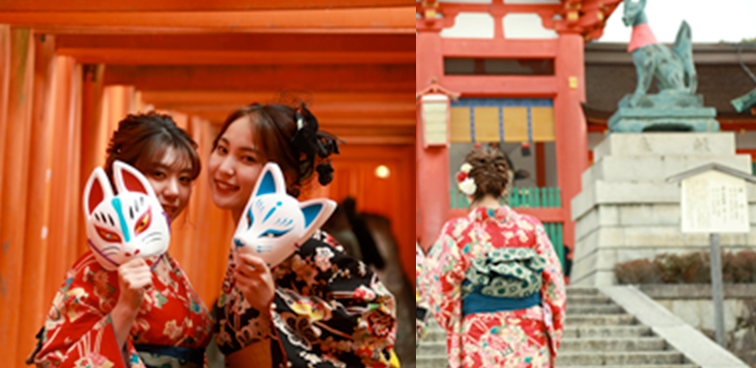
45-1, Fukakusa Inarinakanocho, Kyoto Shi Fushimi Ku, Kyoto Fu, 612-0807, Japan
Tel. +81-75-634-8900 / FAX +81-75-634-8901 / E-mail E-mail fushimiinari@okamoto-kimono.com
Nearest Station: JR Inari Station / Keihan Fushimi Inari Station
Rental Kimono Okamoto Gion Shop
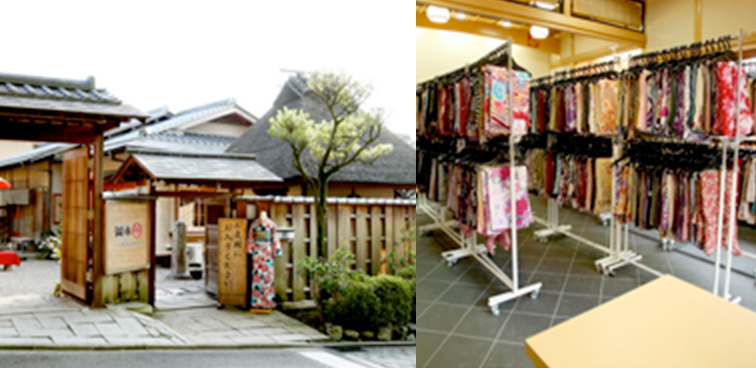
523 Washiocho, Higashiyama-ku, Kyoto 605-0072
Tel. +81-75-531-7890 / FAX +81-75-531-8383 / E-mail gion@okamoto-kimono.com
Nearest stop: City Bus Gion Stop
Rental Kimono Okamoto Kiyomizu Higashiyama Shop
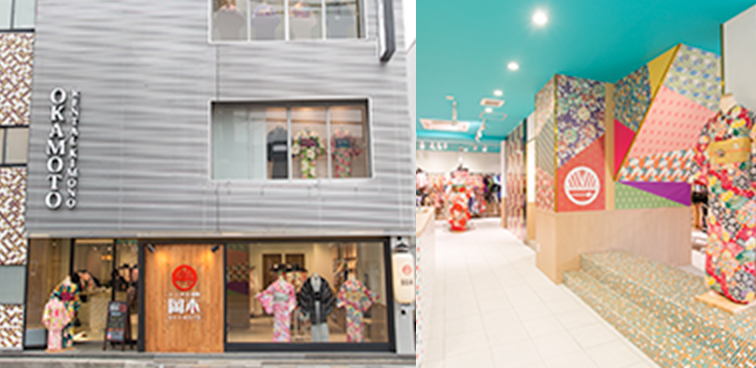
110-9 Tatsumicho, Higashiyama-ku, Kyoto 605-0855
Tel. +81-75-533-8900 / FAX +81-75-533-8910 / E-mail kiyomizuhigasiyama@okamoto-kimono.com
Nearest stop: City Bus Kiyomizumichi stop
Rental Kimono Okamoto Kiyomizu Shop
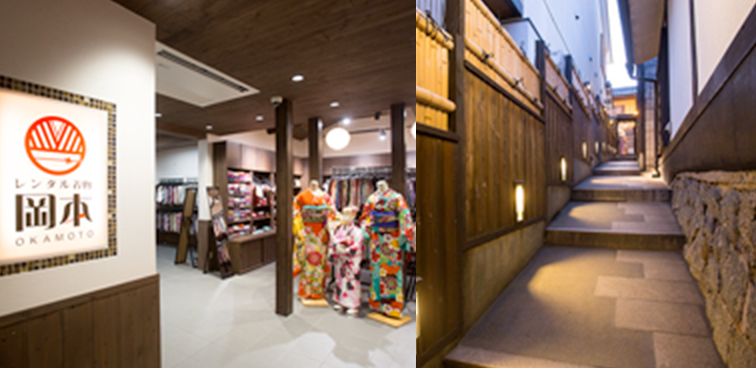
2-237-1-1 Kiyomizu, Higashiyama-ku, Kyoto 605-0862
Tel. +81-75-525-7115 / FAX +81-75-533-8960 / E-mail kiyomizuzaka@okamoto-kimono.com
Nearest stop: City Bus Kiyomizumichi stop
Rental Kimono Okamoto Main Shop
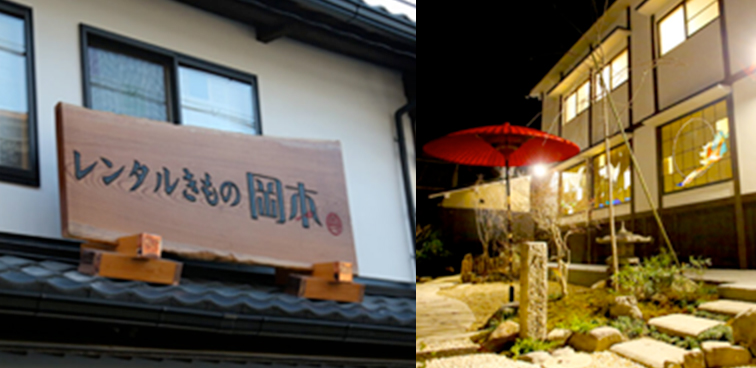
6-546-8 Gojohashihigashi, Kyoto Higashiyama-ku, Kyoto 605-0846
Tel. +81-75-532-1320 /Fax +81-75-532-1480 / E-mail honten@okamoto-kimono.com
Nearest stop: City Bus Gojozaka Stop
Rental Kimono Okamoto Yasaka Jinja Shop
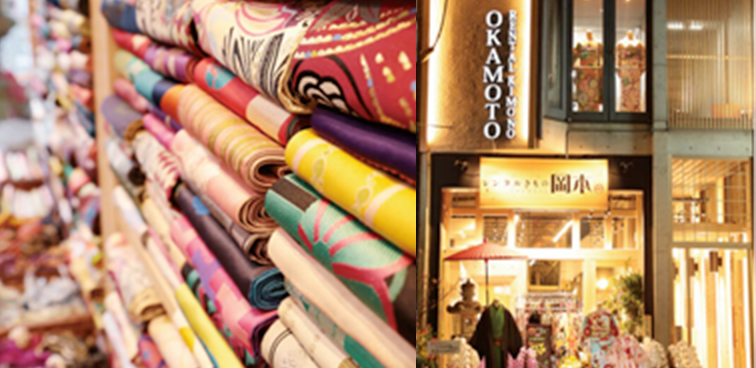
301-1 Gioncho, Higashiyama-ku, Kyoto 605-0073
Tel. +81-75-532-0510 / FAX +81-75-532-0511 / E-mail yasakajinja@okamoto-kimono.com
Nearest stop: City Bus Gion Stop
You can read articles about various information on Kyoto.
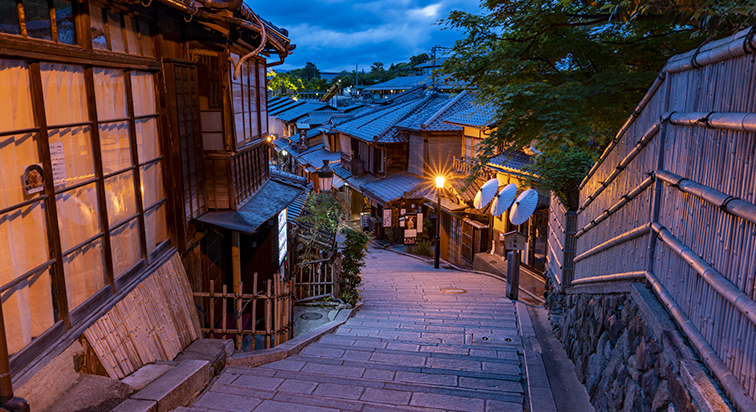
Our kyoto resident staffs post articles about history, sightseeing, regional information of Kyoto. You may enjoy sightseeing even more by deepening your knowledge through this article.








